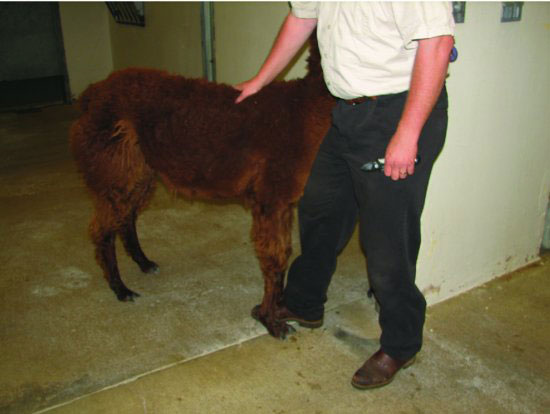RESTRAINT/POSITION
Standing, haltered, chute restraint, and shearing restraints may be used. Toenail trimming can easily be done during shearing if the camelid is laid in recumbency with the limb securely attached to stretch ropes or a shearing table.
TECHNICAL DESCRIPTION OF PROCEDURE/METHOD
For the standing animal, the operator uses their foot to abduct the animal’s leg (Figure 31.2) and then leans into the animal while picking up the foot and flexing it at the carpus (tarsus) and fetlock (Figure 31.3a and 31.3b). Camelids have a ‘v’-shaped toenail (Figure 31.4a and 31.4b), rather than a hoof, making trimming rapid and simple. Using pruning shears and entering the toenail from the palmar or plantar side parallel to the footpad, make cuts to level the nail with the footpad. Depending on the exact conformation of the nail, a single cut may be made across both sides of the nail or two ‘v’ cuts may be made (Figure 31.5) with an additional cut to level out the apex. For severely overgrown toes, extensive cuts (Figures 31.6a, 31.6b, 31.6c) may be required. Although the quick does not grow out significantly into the nail, bleeding may occur in some cases.
Figure 31.2 The operator has placed his hand on the animal’s back and is abducting the animal’s forelimb.

Stay updated, free articles. Join our Telegram channel

Full access? Get Clinical Tree


